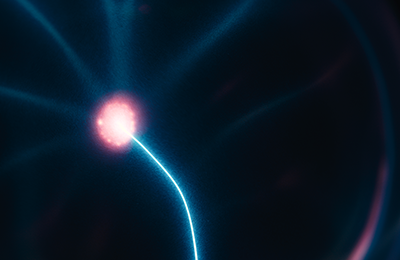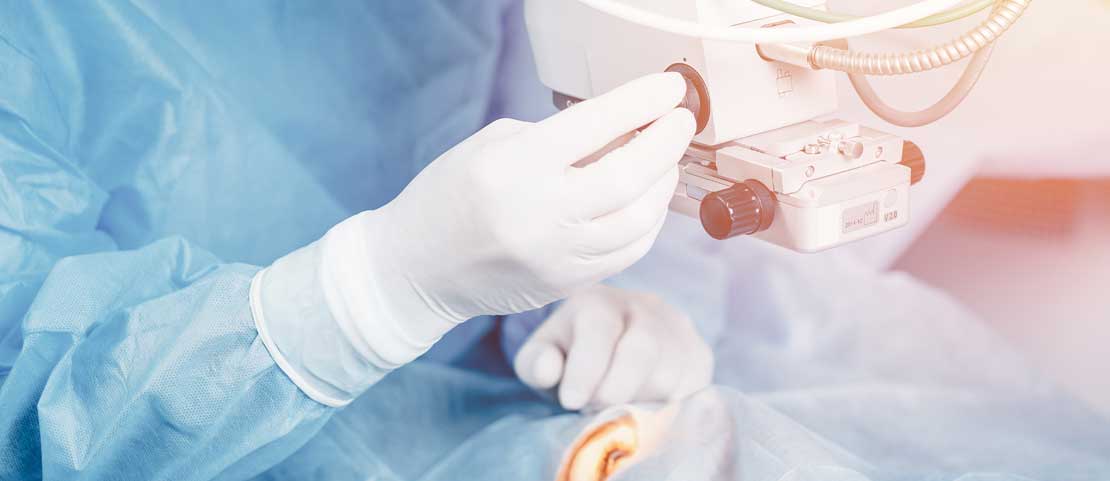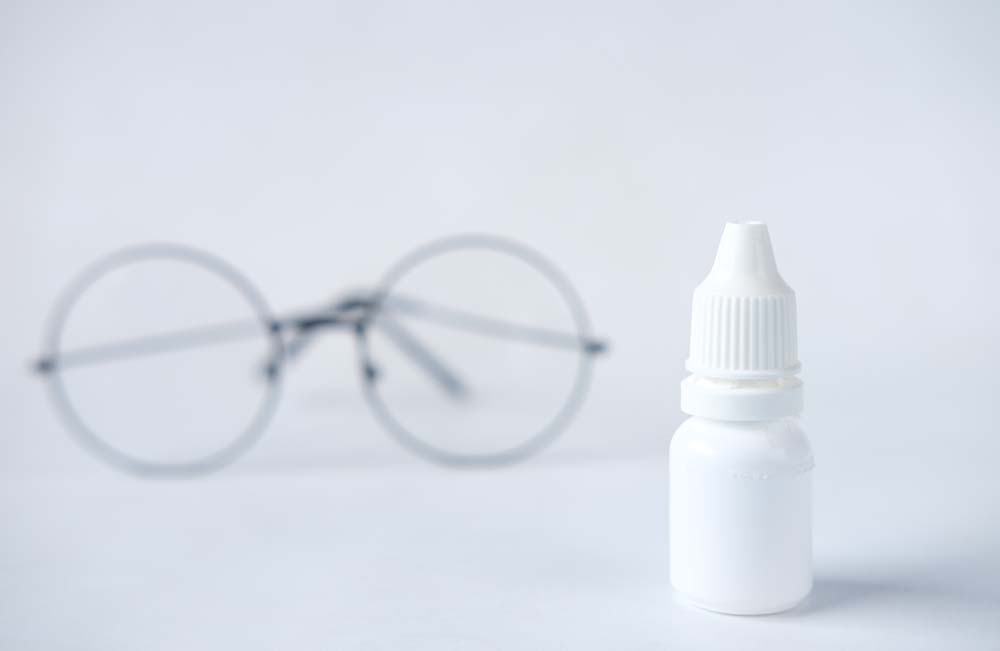

What Does AI Really Mean For Ophthalmology?
The world of ophthalmology and vision science is an ever-developing space as technological advancements, diagnosis, and treatment options evolve rapidly. The inclusion of AI in the ophthalmology space is a recent but exciting development, with a wide breadth of potential for clinicians and patients alike.
Ranging from autonomous AI devices to assistive AI tools, there are several avenues of AI development within ophthalmology spaces offering differing benefits. AI has proven particularly helpful in fundus imaging and optical coherence tomography (OCT).
We know OCT testing is highly important in diagnosing glaucoma, diseases of the retina, and diabetic eye disease, and means of improving reliability and efficiency are sought after. As AI develops, it has been found highly effective in aiding OCT and HCPs in diagnosis and management - and looks set to revolutionise the imaging test.
In the fundus imaging process, deep learning algorithms have been found to differentiate a retinal fundus image from others, whilst allowing a high level of image quality evaluation, and the ability to discriminate between the left or right eye, and the presence of AMD and GON with a high level of accuracy.
With such a wide and impressive range of uses, it feels timely to explore the leaders within today’s ophthalmology spaces and how they are developing AI solutions for diagnosis and treatment.
Leading AI Solutions in Ophthalmology.
Eyenuk & Diabetic Retinopathy
Diabetic eye screening is one of the biggest uses of artificial intelligence and deep learning in ophthalmology right now, using fundus images to detect and monitor the progressive stages of the disease.
Since the IDx-DR from Digital Diagnostics was granted breakthrough device designation by the FDA back in 2018 for detecting more than mild diabetic retinopathy (mtmDR), many other companies have been moving into the space.
One of the emerging leaders in the space is Eyenuk, based out of California. The company was founded by Kaushal Solanki, who after facing a four-month wait to see a specialist about his retinal scans, realised the shortage of qualified professionals and set out to address the issue.
Eyenuk’s mission is to screen every eye in the world and their EyeArt system is the first and only technology to be FDA-cleared for autonomous detection of both mtmDR and vision-threatening diabetic retinopathy (vtDR). It currently supports over 200 locations in 18 countries and recent studies have found that the EyeArt system detects DR with far greater sensitivity than ophthalmologists’ dilated exams.
The UK National Screening Committee recently confirmed Eyenuk and the EyeArt system to be safe, cost-effective, and have sufficient high-quality evidence, singling it out as the only diabetic eye screening AI system to be reading for live implementation in the NHS.
Eyenuk is creating a new gold standard in eye screening and after recently securing $26 million Series A funding they will look to use their technology to monitor for other vision and life-threatening conditions such as Glaucoma, Macular Degeneration, Alzheimer’s, Hypertension/Stroke and Cardiovascular diseases.
EyRis & APAC
Based out of Singapore, EyRIS are another company who have developed AI technology and a Deep Learning System to improve the quality of eyecare with a key focus on the APAC region.
Its system, SELENA+, analyses digital fundus photographs to automatically detect diabetic retinopathy, glaucoma suspects and age-related macular degeneration.
EyRIS has developed partnerships with the Singapore National Eye Centre and the National University of Singapore to develop and enhance the system. In recent years, it has also partnered with companies such as Topcon and Optomed to bring Selena+ to 18 countries in South and South East Asia as well as others in South America, Africa and parts of Europe.
The number of ophthalmologists per capita is a global issue with even harsher effects on developing countries. 70-80% of children in Singapore are severely affected by Myopia, whilst China has begun enforcing KPIs for myopia control in schools, making this region a prime target for EyRis and SELENA+. Partnerships such as this one give eyecare professionals the ability to screen more patients with ease, creating a game-changing effect in early detection across the APAC region.
Alongside this, the continued change to society's diet and lifestyle is a cause of an alarming increase to diabetes and diabetic-related blindness. As a result, early detection is more important than ever - meaning the need for EyRis to develop future algorithms for other diseases is an increasing necessity.
Altris AI & OCT
Founded in Ukraine, Altris AI has developed a web-based AI software designed to scan and interpret OCT images to support eye care specialists in their care of patients. The system can detect 54 pathological signs and 49 pathologies and gives results in a matter of minutes.
The software uses OCT images to analyse the 128 horizontal scans and generate an easy-to-read, colour-coded report and segmented image, showing the detected pathologies or pathological signs and their severity. This allows the eyecare professional to make an educated decision on next steps for treatment or continued monitoring.
This technology assists ophthalmologists with controversial and hard-to-diagnose OCT scans as well as giving other eyecare professionals, such as optometrists, the confidence to use OCT in their practices (currently around 16% don’t offer OCT due to a lack of confidence in their interpretation skills).
Altris AI is CE-marked and growing fast across Europe, South America, Canada, and the Middle East. In addition, the company offers an 'Education OCT' app where ophthalmologists can share OCT images and cases with a community of specialists for learning and second opinions.
Establishing AI for Ophthalmology Success.
Whilst doubts around overhead costs, clinician training, and treatment room logistics have caused some in the ophthalmology space to sit on the fence regarding AI onboarding, a review of current solutions presents a culture of positivity, flexibility, and possibility that can only improve future projections for professionals and businesses in the space.
From automated learning to help minimise missed diagnoses, to more nuanced treatment plans and improvements to precise reporting, the future for AI looks bright. The expertise and personability of the clinician will always be needed, but the support of automotive and assistive AI looks set to thrive alongside.
Interested in discussing AI in the industry with me in more detail? I'd love to hear from you. Get in touch at danny.laycock@medical-cm.com or connect with me on LinkedIn to chat.
Recommended.

Breakthroughs in Modern Cataract Surgery.
In 2023, what advancements can be seen across cataract surgery and the wider ophthalmology space? I’ve explored some of the more impressive new tech.

What Does AI Really Mean For Ophthalmology?
AI advancements are leading to huge developments in ophthalmology. What does this mean for clinicians and patients? Click to find out my thoughts.

Glaucoma Companies with 2022 Vision.
I’m always interested in companies focused on innovative devices and products, so was intrigued by these players in the glaucoma market. Click here to find out who.
.jpg)
5 Innovative Surgical and Diagnostic Products Changing the Industry Landscape.
As frequency of eye disease rises with aging populations, these industry innovators are enabling earlier disease detection and creating more efficiency in the process. Click to find out more.
Comments.